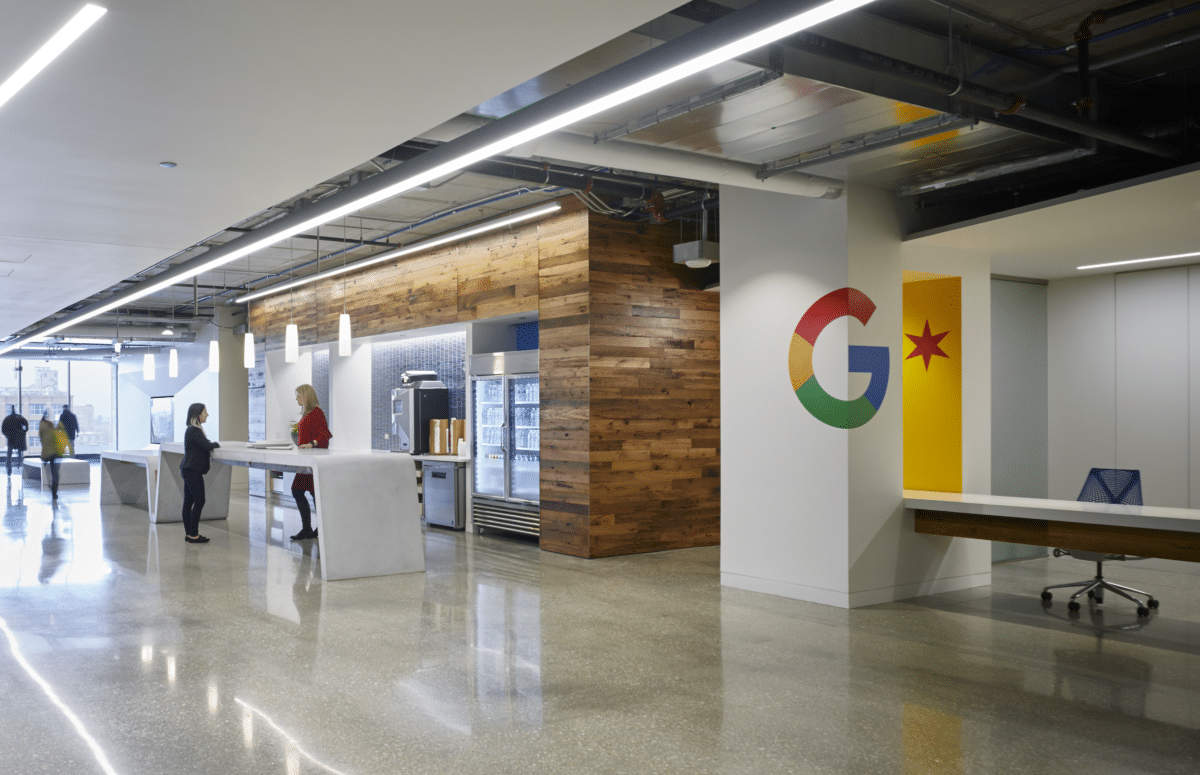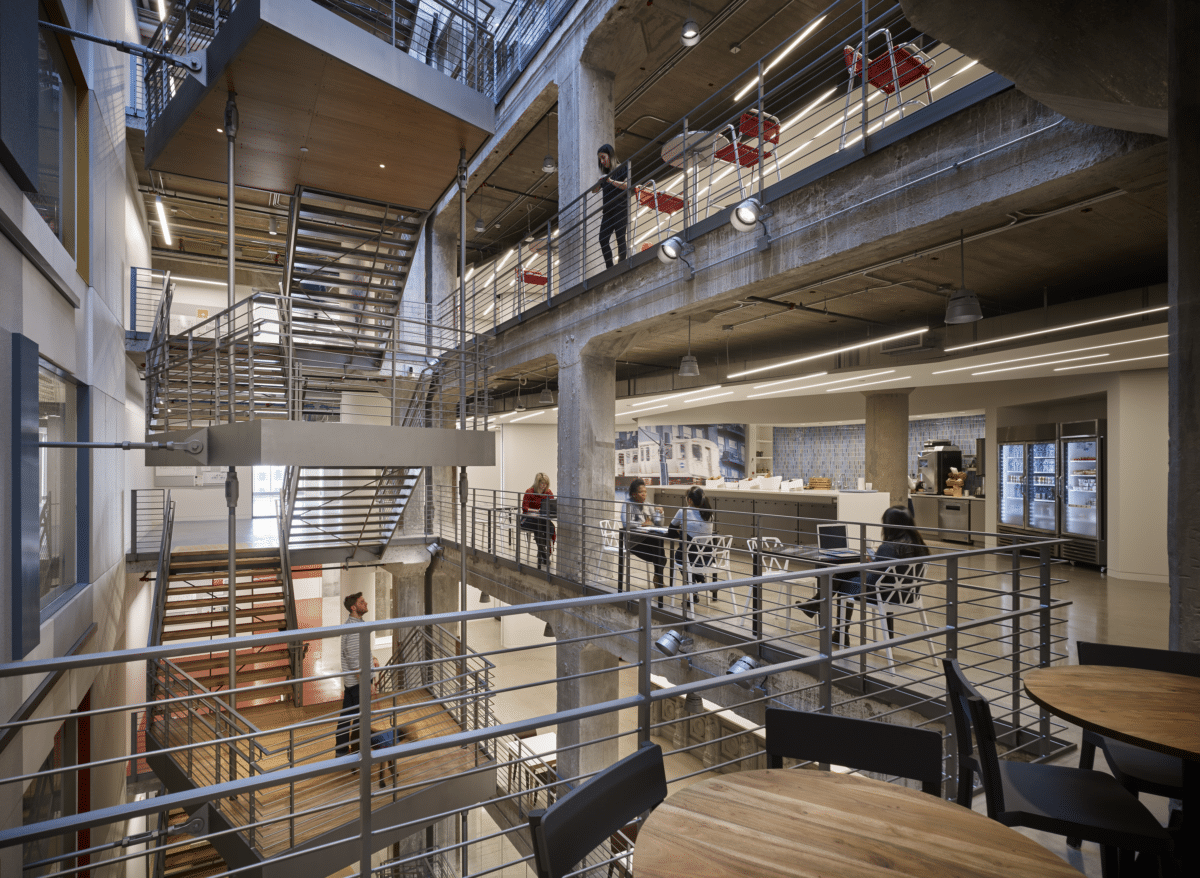
The Google office in Chicago is among the greenest workplaces, with passive daylighting, an open floorplan, and responsibly sourced materials. [Photo: Tom Harris]
When Google signed the lease on a 350,000-square-foot office in a former meat warehouse in Chicago, they got a hip space with an industrial vibe, but the bare expanse of concrete was far from the inspirational workplace Google favors for its employees. To guide the transformation, Google decided to pursue not one green building certification, but three: LEED v4, the WELL Building Standard, and the Living Building Challenge’s Petal Certification. Chicago was the first Google office to pursue all three.
While helping to design the space, the first challenge faced by the architecture team at Stantec was to find a way to draw daylight into the deep, dark former warehouse, both to make it a more pleasant environment for employees and to take advantage of passive daylighting to save energy. Their solution was to punch through all seven floors to create an atrium in the center of the space, drawing sunlight into the core of the building and visually connecting the floors. To ensure the structure takes full advantage of all that sunlight, the lighting system is responsive—the brighter the sun, the less energy used on electricity.

[Photo: Tom Harris]
The atrium is surrounded by a stairway with large landings designed to stimulate conversation among employees and encourage movement between floors. Donald Dorsch, the project lead, says the team thought of area around the atrium as the city center, where all the hustle and bustle is, then followed that idea to its natural conclusion by organizing the rest of the office around a city blueprint. The space becomes less congested as you travel away from the center of town, through the suburbs, and into the countryside—or, in this case, toward the office’s perimeter, where most employees have their workstations.
“That kept all the built environment toward the core and left the windows at the outer edge exposed,” Dorsch says. “There’s not one built thing along the windows, it’s all for the employees, to let in the light and the views.” That dogged insistence on sharing all available sunlight with Google’s employees was guided, in large part, by the Living Building Challenge, which stipulates that a building be designed to lift its occupants’ spirits.

[Photo: Tom Harris]
When they set out to source materials for the building, the team analyzed the three certifications they were pursuing and found that by focusing on the LBC’s guidelines they’d also meet the standards for LEEDv4 and the WELL Building Standard. Google also placed a huge emphasis on finding local and sustainable solutions to provide a safe and healthy work environment for their employees. To conquer the rigorous standards, the team took a multifaceted approach. First, they reached out to vendors who had already chosen to disclose their ingredients list, then they sent letters to those who hadn’t already to advocate for transparency. They also developed educational materials that broke down the requirements in a simple way—namely, using a board they called the “cliff note” in meetings so they’d always have those sustainability points on hand.
The team ran into one roadblock when they tried to source wood doors and couldn’t locate any that were both Forest Stewardship Council–certified and free of formaldehyde. In the end, the team decided to use hollow metal instead. “The experience opened our eyes as far as the contents of materials goes,” Dorsch says. “You can specify a material that you think is green, but then you start looking into the actual chemical composition of the material and find out there are these bad chemicals in there. We now look a little deeper into the actual materials we’re using in lieu of just saying it’s green.”

